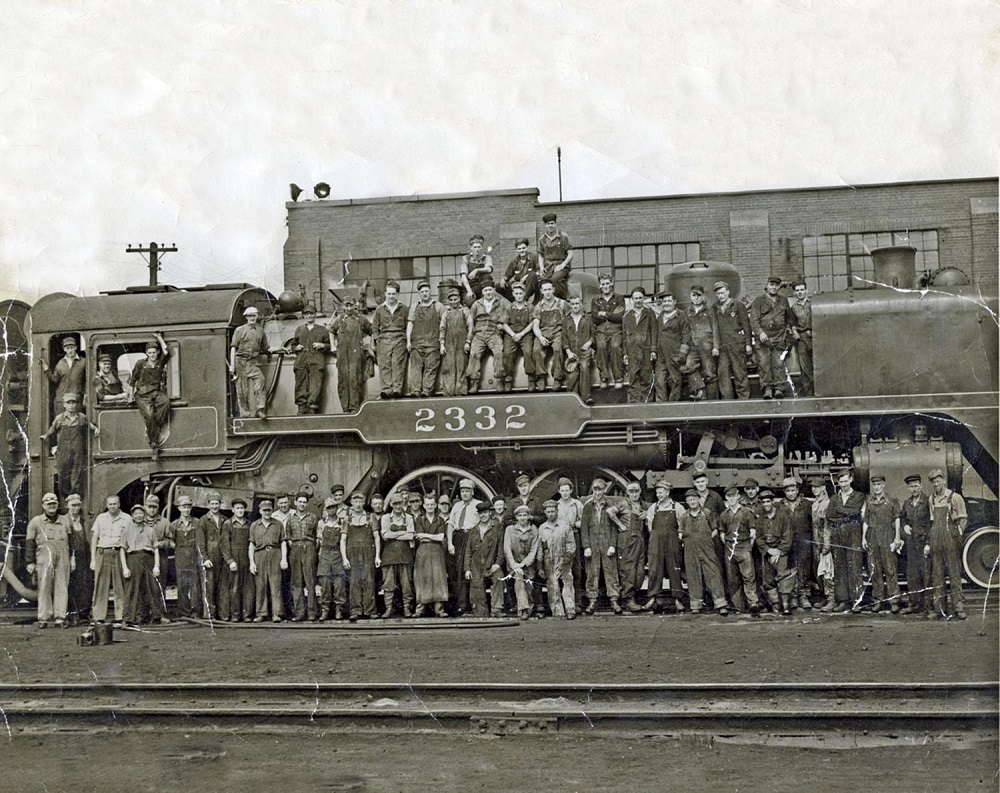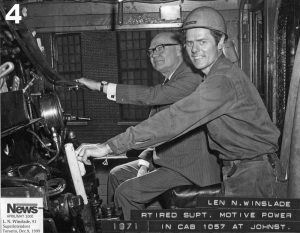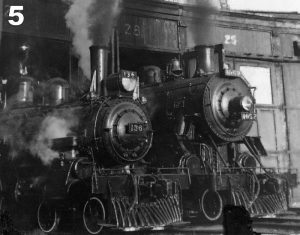Still Steaming Ahead

This undated photograph shows some of the workers of the John Street Roundhouse posed in front of one of the locomotives they serviced.
In the 1920s, steam train travel was booming. As a result, the John Street Roundhouse operated 24 hours a day, 7 days a week. The early 1940s saw increased demands and pressure on the railways. The war effort during the Second World War (1939-1945) called for the transport of both troops and supplies.
There were about 50 Canadian Pacific Railway (CPR) trains scheduled per day in and out of Union Station in the summer of 1942. Each train was hauled by a steam engine. Each engine needed servicing at John Street after completing its journey.
Diesel Engines
In the late 1930s, diesel-electric power began to replace steam engines. This change started mostly in cities where the clouds of coal smoke were unpopular with city dwellers. Additionally, steam engines were expensive to run and maintain. A steam-powered engine required at least two people to operate (an engineer and a fireman). After a trip, engines spent eight hours or longer in servicing. The emerging diesel technology was much more efficient. Railway companies were able to cut staffing and maintenance costs by switching to a diesel-powered fleet.
CPR retired the last of its steam engines in 1960. However, during the 1970s, several steam engines were restored at the roundhouse. These engines were privately owned and used for special trips. There were still a number of Canadian Pacific employees at John Street familiar with these engines, including Mr. Clarke. Also, the roundhouse still contained the necessary facilities and equipment. Other roundhouses in Canada had either been demolished or had their steam maintenance equipment removed.
Movie Engines
Mr. Clarke supervised the restoration of steam engines CPR Nos. 136 and 1057. These engines belonged to the South Simcoe Railway in Tottenham, Ontario. No. 136 is of particular interest as the engine had a starring role on television.
In 1973, CBC aired a television series based on Pierre Burton’s works The National Dream (1970) and The Last Spike (1971). These works were extremely successful and important in bringing the history of the railways to the public. The challenge for the CBC was to locate old railway equipment to use for filming. Many older engines were scrapped by railway companies.
The most important “prop” for this series was an operating steam engine authentic to the period. The engine chosen by the film crew was No. 136. Although the engine had been built in 1883, it had been heavily modified in the early 20th century and was no longer authentic to the period required. The engine was refurbished at Hume Equipment in Milton, Ontario, and moved by truck to the John Street Roundhouse for final work and paint. Several cosmetic alterations were made, including a wooden cab, long pilot, oil headlight and several different smokestacks. Removable numbers on the cab and tender, along with other embellishments enabled No. 136 to portray at least three different engines in the production.



